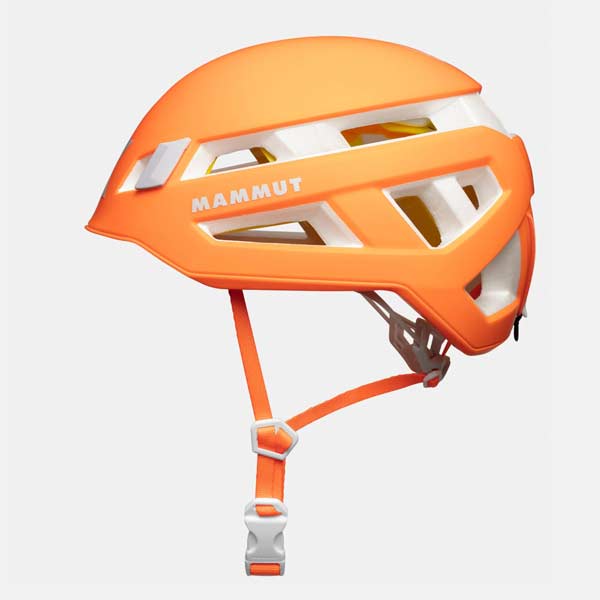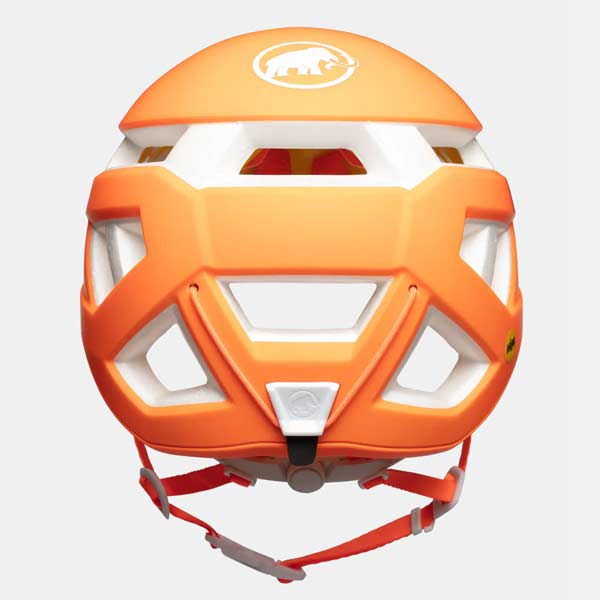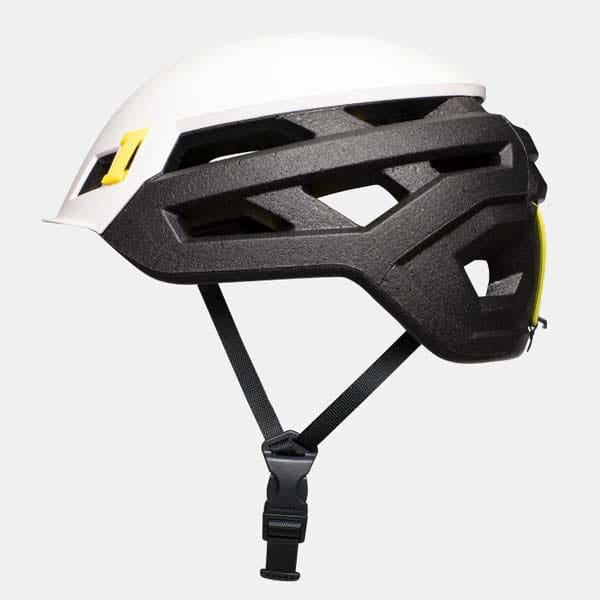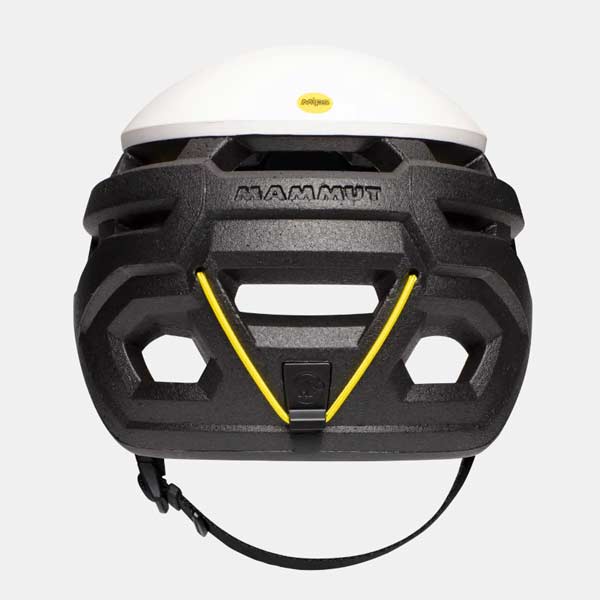MIPS stands for Multi Directional Impact Protection System and is a helmet safety system that reduces rotational forces acting on the head in the event of an oblique impact. Mammut relies on this protective system, which is important for the brain, for the Wall Rider and the Nordwand helmet.
With helmet systems for winter sports or mountain biking, the MIPS technology already established. The Swedish safety system is just about to be introduced in climbing. The first providers are offering climbing helmets with MIPS technology, including Mammoth. The Swiss mountaineering outfitter has with the Wall Rider and the North Face Helm currently has two such models on offer.
"We decided to integrate MIPS into our helmets because we wanted to make them safer without adding weight."
Magnus Rastrom, Senior Product Manager Climbing Gear at Mammut
Mammut Wall Rider: First MIPS climbing helmet
Protect the brain from dangerous rotational movements
It is not unlikely that you will be hit by falling objects sooner or later throughout your mountaineering career. If this missile isn't too big and if it happens that it hits the middle of the climbing helmet, you've tended to be lucky in misfortune.
Unfortunately, it is seldom the case that falling material or stone chips arrive at a nice 90-degree angle. And even if you hit your head or fall, the impact is often at an angle. The human brain does not tolerate the resulting rotational forces very well.
"If a climber falls, loses control in the air and hits his head sideways against the wall, the MIPS system helps the most."
Magnus Rastrom, Senior Product Manager Climbing Gear at Mammut
Video: How MIPS technology makes helmets safer
This is where MIPS technology comes into play, which mimics the brain's own protection system and allows offset movement between the head and helmet. A low-friction shell inside the climbing helmet allows movements of the outer shell of 10 to 15 millimeters in several directions for fractions of a second in the event of an impact.
This reduces the rotational movements acting laterally on the head. These arise from a combination of rotational energy and rotational forces and lead to shearing or stretching stresses on the brain tissue.
Mammut MIPS climbing helmets
Additional security is reflected in the price
In terms of comfort, the MIPS technology makes no difference. The low-friction shell is positioned in the climbing helmet in such a way that you hardly notice it and it affects neither ventilation nor comfort. And with a weight of between 25 and 45 grams, the additional safety system weighs little more than a conventional energy bar.
In terms of price, climbing helmets with MIPS technology are significantly higher than conventional models. This is also the reason why Mammut has not integrated the safety system into all climbing helmets. "The system is expensive and not all customers are willing to pay more for better protection," says Magnus Raström, Senior Product Manager Climbing Gear at Mammut.
«MIPS is a great success in both the bike and ski industries. It will be interesting to see if it catches on in the climbing industry."
Magnus Rastrom, Senior Product Manager Climbing Gear at Mammut
Experiences in winter sports or mountain biking have shown that MIPS technology is able to reduce rotational forces and successfully imitate the brain's own protection system. It remains to be seen whether the system will also catch on in the climbing industry.
That might interest you
- Video: Adam Ondra and Jakob Schubert try to flash explosives (9a).
- Video: Here climbs Adam Ondra Bomba (9b) and Bombardino (9a + / 9b)
- The ultimate test: We tested old climbing equipment
+ + +
Credits: Cover photo Mammut Sports Group AG, Will Saunders





